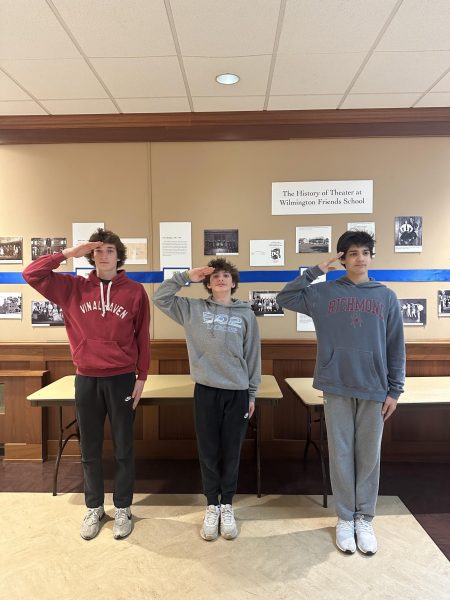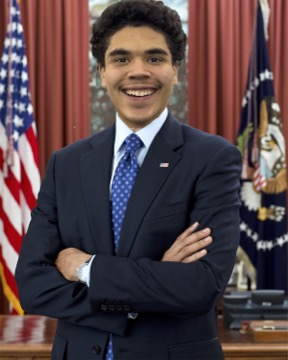The Fight for Equality in Pro Soccer
March Issue: Social Justice
Women’s National Soccer Team
Not only is gender inequality prevalent in the political, social, and cultural world, but it has also encroached on the world of American sports. The U.S Women’s National Team has become an icon for gender equality in sports around the nation. Rules concerning equal pay, quality of facilities, rules, and even dress code have been enforced on the women’s national team throughout the years, as women face discrimination on a number of different levels in the sports world. The U.S Women’s National Soccer team has been on a mission for the past few years to popularize women’s sports and call attention to the inequalities, not only for their team, but for every woman who plays a sport.
In the early winter of 2015, the Women’s National Soccer Team made headlines around the world when they refused to play a game in Hawaii after seeing the conditions of the field. The artificial turf that they were meant to play on was ripping around all edges, with sporadic holes across the surface. This was the first of many circumstances where the national team would raise questions about the equality in the game that they played. Carli Lloyd, two time Olympic Gold Medalist, 2015 World Cup Champion, and World Cup Golden Ball Winner expresses her frustration with the position she and her teammates are in. She comments, “Enough’s enough. We’ve been playing on subpar fields, in subpar locker room conditions. It’s time to kind of get a protocol in place. We’re world champions. What we say and what we do really speaks volumes to the entire world. It’s important for us to fight for what we believe is right.” Although this may seem like a petty detail, playing on conditions such as these make the likelihood of injury much higher, putting the players at a greater risk. Since 2014, the Men’s National Soccer Team has played on solely grass surfaces, lowering the risk of injury and increasing an overall experience of play. In 2015, a group of the top U.S players sued the International Federation of Association Football (known as FIFA) and the organizers of the Women’s World Cup for discrimination against women. They claimed that women’s soccer along with many other sports faced discrimination, and specifically argued that women shouldn’t play the World Cup on artificial turf, seeing as the men’s tournament is played on grass. Coincidently, women are outnumbered on FIFA’s executive committee eight to one, and as expected, the group’s demand was denied.
Equality in pay has been in recent debates in the Presidential Elections, but also in debates amongst the U.S players, FIFA, and the World Cup Association for a significantly lower pay grade for women than men. For some of the top players in women’s soccer in the United States, the minimum salary is one tenth of what a man in the same position would make. Annual salaries for players on the National Women’s Soccer Team are maxed out around $30,000 a year. Not only do these top players earn less in terms of their salary, but also receive a significantly lesser amount through endorsements. This issue not only follows the US Women’s National Team and other women’s teams around the country, but every American woman who earns less than a man in the same position. According to US News, women still earn about 78 percent of what men earn. Louisa Spinner ’18 mentions her support for gender equality amongst sports in the US: “Right now I think there is a huge gap in equality between men’s and women’s sports overall. They just had the World Cup in Canada that I attended, and there were many visible problems. Women had to play every game on turf which causes a lot of injuries, and there were many issues concerning accommodations. There are a lot of problems that the association needs to figure out, but it seems as though a lot of attention is being brought to the issue, and they are doing a lot of good things to improve equality.”
Not only are individual salaries a prevalent issue, but the amount of money that the corporations spend on each team has a huge gap in itself. Take the most recent World Cup, for example: for each team, FIFA spent nearly 35 million dollars on the men’s World Cup prize, but only two million dollars on the women’s prize. Chamby Zepeda, assistant coach for both girls and boys soccer teams, shares his opinion on the situation: “Even though the overall exposure and playing conditions are improving, women’s soccer still has to fight an uphill battle against men’s soccer, due to the fact that it hasn’t been around as long.” Chamby discusses that even though Men’s soccer still brings in more revenue, has more exposure, and has many more financial perks than women’s soccer, both teams are equally talented. He adds that one could easily argue that the professional women’s soccer team is much more talented, looking at their record, but the recognition isn’t as noticeable.
Unfortunately, pay and playing conditions are not the only areas in which women experience unfair treatment concerning FIFA. The head of FIFA, Sepp Blatter, suggests that the women wear more revealing uniforms to make the sport more popular: “Let the women play in more feminine clothes like they do in volleyball. They could, for example, have tighter shorts. Female players are pretty, if you excuse me for saying so, and they already have some different rules to men – such as playing with a lighter ball. That decision was taken to create a more female aesthetic, so why not do it in fashion?” Ideas like these should not be presented in order to popularize the sport, and unfortunately mirror the way women are viewed in nearly all aspects of our culture. Jackie Conner ’16 says, “ I think the perception of men and women’s sports, especially their importance and skill required to accomplish them, is quite telling of the way men and women are viewed in a lot of professional scenarios, as well as everyday life. It’s not fair or correct, and the perception needs to change.” The women on the Women’s National Team felt the same way, which prompted them to launch #SheBelieves on social media, which encourages all of their female fans to set high goals and reach them no matter what. The team created this campaign in order to promote the belief that women can achieve any of their goals by defying any and all who don’t believe. The team states, “We believe in your dreams, in your goals, and in your ability to reach them. It might be an uphill battle, and you will get knocked down, but it’s your battle. Own it. Fight it. Never give up on it.”
The US Women’s National Team is just one example of a group of women who have recognized and fight against the inequalities on and off the soccer field. #SheBelieves is just the beginning of a long fight, not only for the Women’s National Soccer Team, but every woman and man playing sports around the world. The inequalities the women experienced in FIFA and around the world only parallel what every woman experiences everyday in her job, school, sport, or any other daily activity. It’s time for a change, and the USWNT is only the start to a national fight for equality.






































